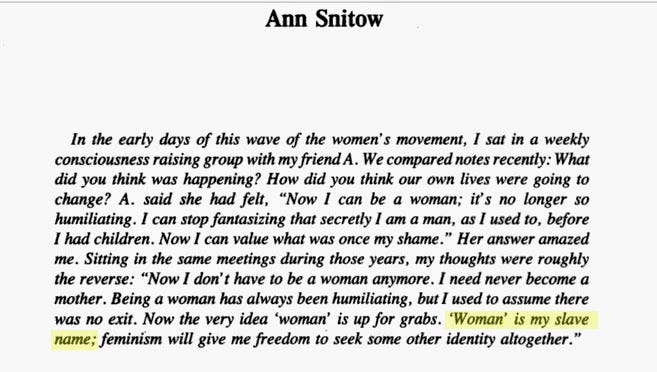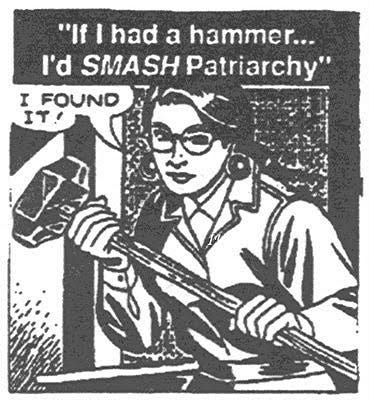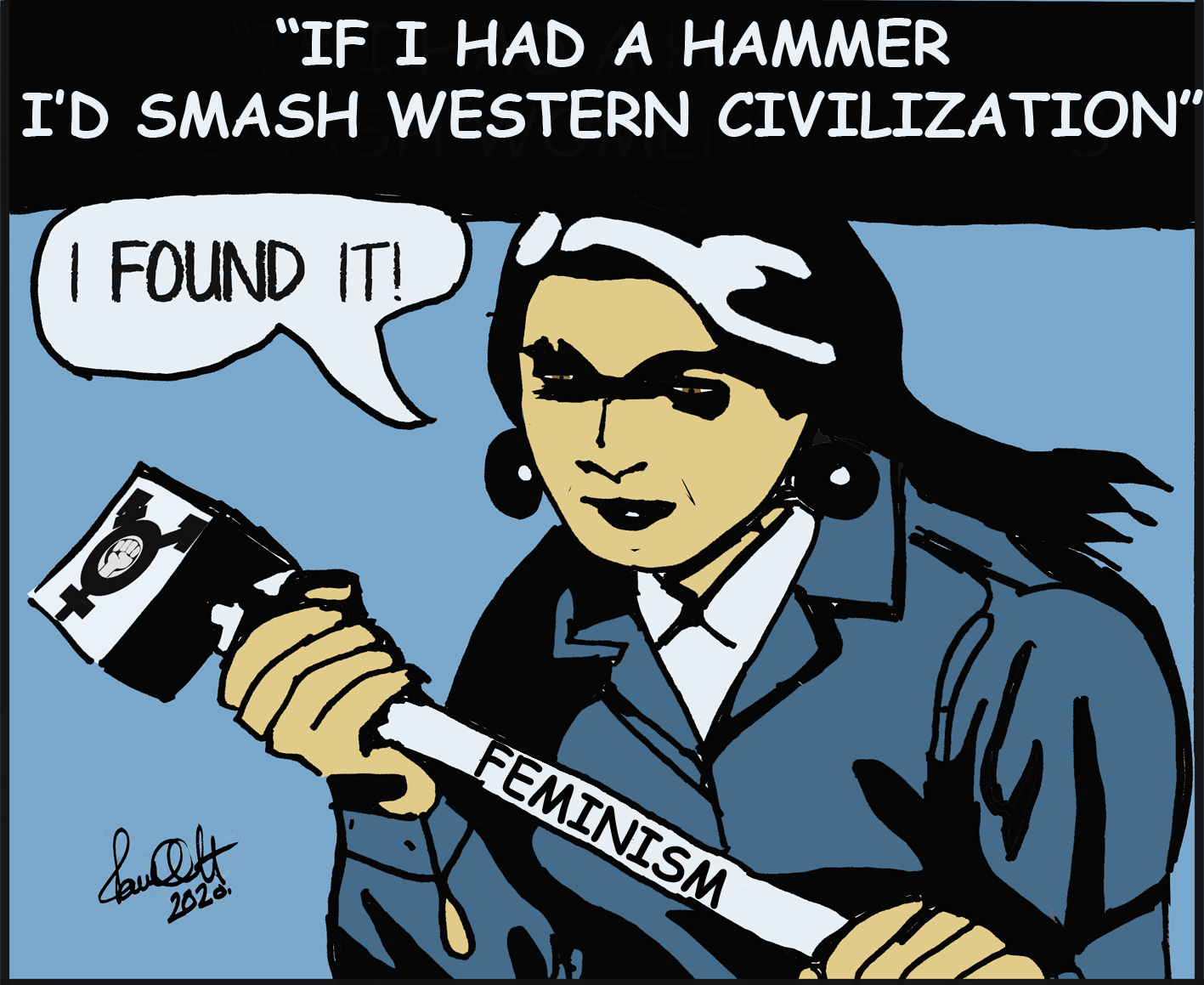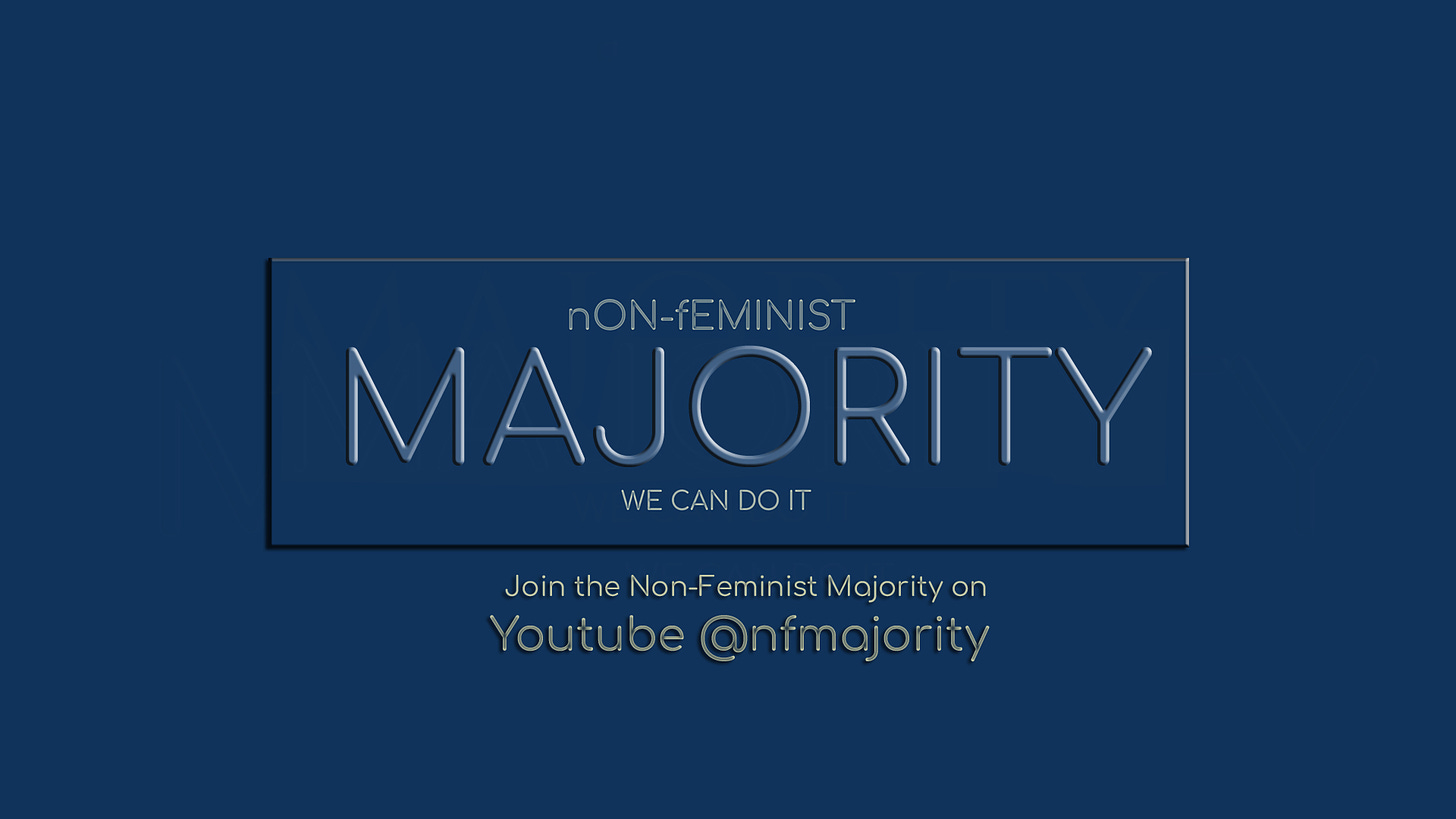When is a feminist not a feminist?
"The terms “feminist” and “woman” are not synonyms. Feminists are identified by their politics, not their sex or gender. And they are a minority."
This is an article I wrote after researching feminism for this academic paper and was originally published in Psychology Today as a guest blog named “When is a feminist not a feminist?” on the mighty Lee Jussim aka The Dark Pirate Jussim @PsychRabble’s PT blog.
Anne Snitow, Gender Diary in Conflicts in Feminism Eds. Evelyn Fox Keller, Marianne Hirsch. 1990.
“Feminism: The advocacy of women’s rights on the grounds of the equality of the sexes.”
“Egalitarianism: The doctrine that all people are equal and deserve equal rights and opportunities.”
The two quotes above are sourced from the Oxford Dictionary. On the face of it, feminism and egalitarianism appear to converge. Indeed, it is not unusual to hear feminists appeal to this dictionary definition whenever they are asked to describe feminism. Let’s call this the “reasonable person” defence, e.g., What reasonable person could possibly disagree?
They can’t. Not if they want to remain reasonable in the eyes of others.
But similarly, what reasonable person could disagree with egalitarianism? Both premises are highly reasonable. But as numerous studies and surveys have demonstrated, a majority of people support egalitarian values but do not identify as feminists. 1 2 3 4
What’s going on? Are these people confused, ignorant, or both?!
Neither.
It seems the non-feminist (not anti-feminist) egalitarian majority either know or intuitively suspect a crucial difference between the goals of egalitarianism and feminism. Unfortunately, looking to dictionary definitions does not help us articulate what these differences are.
A visit to the Stanford Encyclopedia of Philosophy gives us a more detailed description of both concepts. The opening preamble to the egalitarian5 chapter dovetails nicely with the dictionary definition above. The feminist chapter6, however, quickly diverges from the dictionary definition, running off into various strands where the key theme is internal disagreement within feminism about what feminism is. It takes just over 3,000 words before the term patriarchy first appears but when it does, it is neither problematic nor contested.
“Feminism, as liberation struggle, must exist apart from and as a part of the larger struggle to eradicate domination in all its forms. We must understand that patriarchal domination shares an ideological foundation with racism and other forms of group oppression, and that there is no hope that it can be eradicated while these systems remain intact. This knowledge should consistently inform the direction of feminist theory and practice. (hooks 1989, 22)”
Here is the first hint of what differentiates feminism from egalitarianism. You will note there is no mention of equality by hooks; the goal is “liberation” from “patriarchal domination.”
Ask an orthodox (social constructionist) feminist what feminism means and you are likely to get one of two responses. First, we have the “reasonable person” defence (as above) which takes the form of feminism being linked to a vaguely defined concept of equality, while the other, is what I will call the feminist two-step. The two-step is a dance that entails the feminist stating that feminism is not a monolithic movement and that its aims are too complex to pin down7 then, quick as a flash, repeating the approved 40+-year-old dogma which constitutes the feminist canon. The two-step is meant to put you off balance. It is easy to get lost in this equivocal maze and indeed, the aim is obfuscation, not illumination.
So, rather than trying to discern the differences between warring feminist factions, I instead asked myself what they had in common. The results help us see the difference between egalitarianism and all feminisms.
In 1963, the liberal feminist Betty Friedan published a book about a “problem with no name.” Seven years later, radical feminist Kate Millet named it: “patriarchy.”
Patriarchy (or as it is sometimes referred to hegemonic masculinity) was conceived of as the underlying structure which facilitated men’s oppression of women; “a system characterized by power, dominance, hierarchy and competition, a system that [could not] be reformed but only “ripped out root and branch.”8 (my emphasis)
This moment marked a fundamental change in strategy as feminists shifted from a liberal policy of achieving equality through reform, to a radical strategy of trying to dismantle the panchreston known as patriarchy. Around that time, Friedan was unceremoniously kicked out of the organisation she had founded because she wasn’t radical enough.9 Since that time, patriarchy has remained central to all subsequent waves of feminism. While it is true that the different factions of feminisms have slightly different conceptions of patriarchy, they all agree on the following three premises: 10
Patriarchy is a socially constructed phenomenon that enforces notions of sex and gender that equate to male supremacy and female inferiority.11 12
Patriarchy is the mechanism by which all men institutionally oppress all women. 13
All feminisms are united in the fight against patriarchy (if little else) 14
The fact that these founding premises of the feminist conception of patriarchy are false, and then so must be all that follows from them, are never addressed. It is less theory than dogma. Both the existence and origin of patriarchy are assumed by orthodox feminists rather than explored, yet the flawed, circular logic of these premises represent the ideological bedrock of all orthodox feminisms — from radical to intersectional — and social justice activism today.
The orthodox feminist concept of patriarchy is embellished from the anthropological observation that in many cultures men appear to hold more social, economic and political power compared to women. Orthodox feminists assume men grasp for power and resources to dominate women because they hate them (misogyny). My research suggests patriarchy is vastly more complex than orthodox feminists have ever imagined and that women have just as much influence in its structure and maintenance as men. As Mary Wollstonecraft noted;
“Ladies are not afraid to drive in their own carriages to the doors of cunning men.”[15]
It is my assertion that patriarchies exist on a wide continuum from malign to benign. I call these two sides ‘reformed’ and ‘unreformed’ patriarchy. Reformed (Western democratic) patriarchy appears to facilitate female choice; unreformed (of the type which appears in theocracies) appears to suppress it. More crucially, reformed patriarchy also appears to protect against unreformed patriarchy. Were orthodox feminists ever successful in their goal of “smashing” patriarchy in the West, the unintended consequences could be catastrophic for civilisation as we know it. (For more on this hypothesis click here)
Rather than being a static superstructure, patriarchy is a large, fluid, adaptive system that can oppress and liberate, both males and females.
It is largely determined by local ecological pressures, which is why we see so many different versions of it. At its centre is the fact that humans are a sexually reproducing species.
Men and women have shaped one another, both physically and psychologically, over millions of years, via the process of sexual selection. In turn, we create culture, aka ‘patriarchy’, as our fitness landscape. So feminists want to smash culture. That’s a lot easier to understand.
And here lies the rub for orthodox feminisms enamoured with patriarchy and gender theory today: Heterosexual men and women are attracted to one another precisely because of their stereotypical sexual traits. In fact, they are not stereotypical, they are archetypical.
There is a simple dynamic to this: Men want power and resources because women want men who have power and resources.
This isn’t because, as many ideological men’s rights activists assert, women are selfish gold diggers. Neither is is that men, as many feminists assert, are shallow aesthetes.
Sexual dimorphism and the sexual division of labour are not patriarchally imposed tyrannies. They are an elegant and pragmatic solution for a species that give birth to altricial offspring with unprecedentedly long childhoods. This dynamic between the sexes, of teamwork and strong pair bonds, is one of the foundations of our success as a species. The survival of offspring is central to this — whether we choose to have children or not.
The sexes simply cannot be understood except in the light of one another and the reason we evolved to cooperate: offspring. It will continue to be so for as long as we remain human.
Feminism’s legacy is one of taking the capricious, delightful and, yes, sometimes cruel battle of the sexes and turning it into a war of attrition.
Last year, one of the most iconic women of the 20th century, the radical feminist and intellectual, Germaine Greer, was denied a platform to speak at a UK university.[16] Her crime? Greer is what intersectional feminists call a TERF, meaning does not reject biology wholesale and, while she respects the egalitarian rights of men who want to identify, live and love as a woman, she insists this doesn’t actually make them biologically women; they remain transwomen. For this she was stripped of the right to speak, verbally abused and labelled a bigot. Feminist author Laurie Penny went so far as to cast Greer in the same light as people who want to murder homosexuals.
Why should women — or men for that matter — mind? In 2014 a trans-woman in the US was awarded “working mother of the year” despite neither giving birth nor being primary carer to her children.15 Recently, Caitlyn Jenner, who has been living as a woman for a few months, was awarded “woman of the year” ahead of countless women of substance who have made extraordinary accomplishments whilst facing actual selection pressures unique to their biological sex. Men have their own just as intense, yet unique, selection pressures. Transpeople have their own unique ones too.
Transactivists are lobbying for a change of language by midwives to refer to people giving birth as “pregnant people” not “women”.16
At a time when people debate whether a woman drinking the odd glass of wine in pregnancy is child abuse, a transwoman took powerful (but funnily enough not socially constructed) hormones to stimulate lactation.17 A discussion of the nutritional value of the milk extends to the transmother reporting the milk is thick and creamy, which seems to identify it as something other than human breast milk, which is highly dilute and low in fat.
Feminists frequently claim that we live in a rape culture, even though rape and all violent crime in the West is in steady decline and rape prosecution statistics are on a par with other crimes at over 60%.18 19 20In the US there is a ‘progressive’ movement on college campuses to lower the threshold of proof in sexual assault investigations.21 It is staggering to think these educated people have forgotten terrible lessons within living memory; the bitter crop of strange fruit hanging from the poplar trees.
To express scepticism at these events is neither hatred nor phobia. We are all equal before the law under classical liberalism and egalitarianism. This is not the case with feminism and social justice. It places ideology and tenuous group identities before the humanity of individuals. Individual rights and choices are described as“problematic”. 22
Women like myself who point out the logical inconsistencies and totalitarian mission creep of feminism are labelled anti-feminist and anti-woman; as if “feminist” and “woman” were synonyms. They aren’t. Feminists are identified by their politics, not their sex or gender. They do not speak for women or the majority of egalitarians in society; they speak only for themselves. The dictionary definition of feminism is in serious need of a rewrite.
https://web.archive.org/web/20220318091228/https://www.huffingtonpost.co.uk/entry/feminism-reproductive-rights-labels-vox-study_n_7040540
https://web.archive.org/web/20220318091456/https://www.huffingtonpost.co.uk/entry/feminism-poll_n_3094917
https://archive.is/Dv71r
https://www.psychologytoday.com/gb/blog/evolutionary-entertainment/201205/giving-feminism-bad-name
https://plato.stanford.edu/entries/egalitarianism/
https://plato.stanford.edu/archives/sum2018/entries/feminism-topics/
https://archive.is/Dv71r
Tong, R. (1989). Feminist thought: A more comprehensive introduction. Boulder, CO: Westview Press.
https://en.wikipedia.org/wiki/Lavender_Menace
https://www.researchgate.net/publication/263923431_Patriarchy_male_competition_and_excess_male_mortality
de Beauvoir, S. (1949/1986). The second sex. New York, NY: Penguin Books.
Cudd, A., & Holstrom, N. (2011). Capitalism, for against: A feminist debate. Cambridge, England: Cambridge University Press.
Gamble, Sarah (ed). The Routledge Companion to Feminism and Postfemnism. Routledge: 2001
Gamble, Sarah (ed). The Routledge Companion to Feminism and Postfemnism. Routledge: 2001
https://www.huffpost.com/entry/transgender-mother-responds-to-being-named-working-mother-of-the-year_b_5985178
https://archive.is/oEfQg
https://web.archive.org/web/20220318123015/https://straightstatistics.fullfact.org/article/how-panic-over-rape-was-orchestrated
https://web.archive.org/web/20210609112006/https://www.theguardian.com/society/2010/mar/15/stern-review-rape-less-focus-convictions
https://www.independent.co.uk/voices/international-women-s-day-2016-we-spoke-to-the-women-who-won-t-be-celebrating-a6917506.html
https://academic.oup.com/lpr/article/15/4/223/2549058
https://web.archive.org/web/20220318123523/http://feministing.com/2015/05/07/choice-feminism-time-to-choose-another-argument/









You say, “ Patriarchy was conceived of as the underlying structure which facilitated men’s oppression of women; “a system characterized by power, dominance, hierarchy and competition, a system that [could not] be reformed but only ripped out root and branch.”[8] (my emphasis)”.
The thing about the problem with no name as described here is that 1) it has no particular connection with men or women; and 2) is a staple of political theory at least since Hobbes. It is simply a description of the way the world has responded to the state of nature. So Patriarchy looks like a category error, a conflation, in which a very general and accurate insight, that does indeed lack a name, has been infused with sexual politics and named and hence transformed into a concept that is potent but junk.
“Egalitarianism: The doctrine that all people are equal and deserve equal rights and opportunities.”
Perhaps equal before the law (disputable), but no one is equal to anyone else (and not even to himself on some days/later years). No one has equal opportunities either. What we ought to have is liberty (the minimization of proactive impositions).